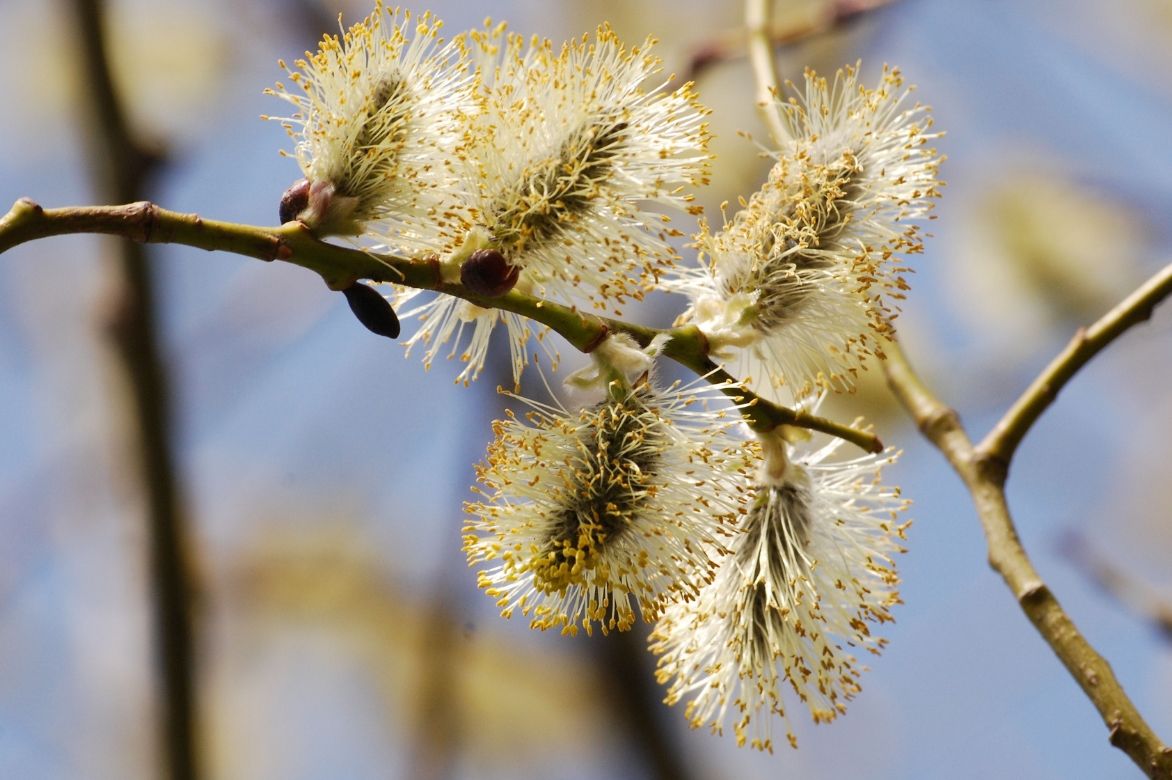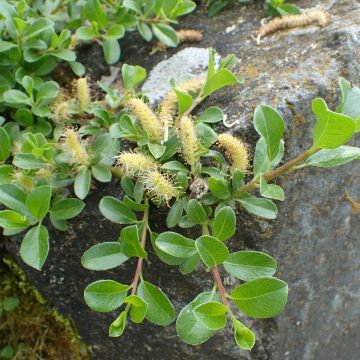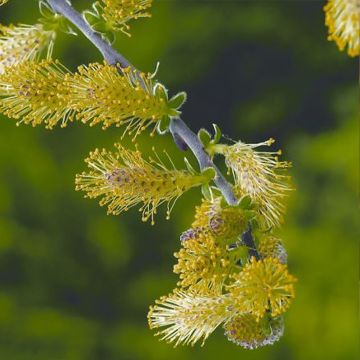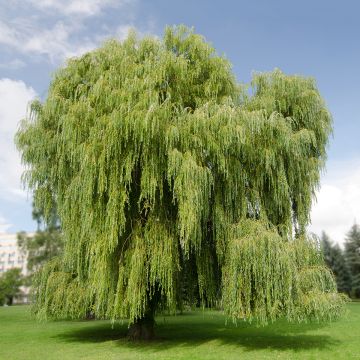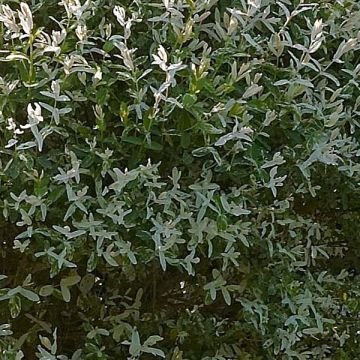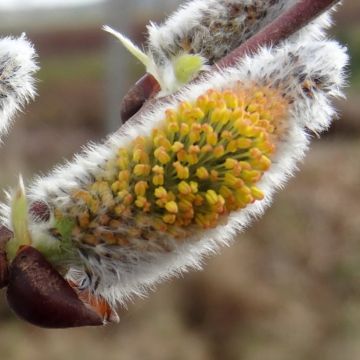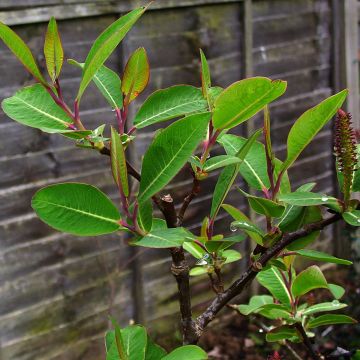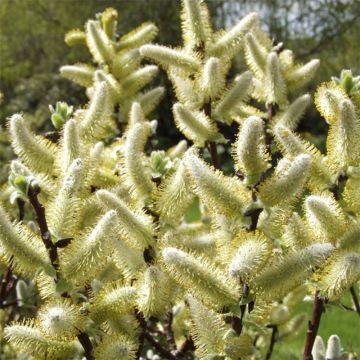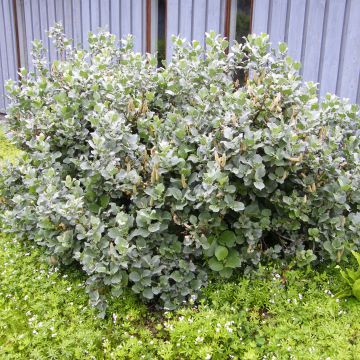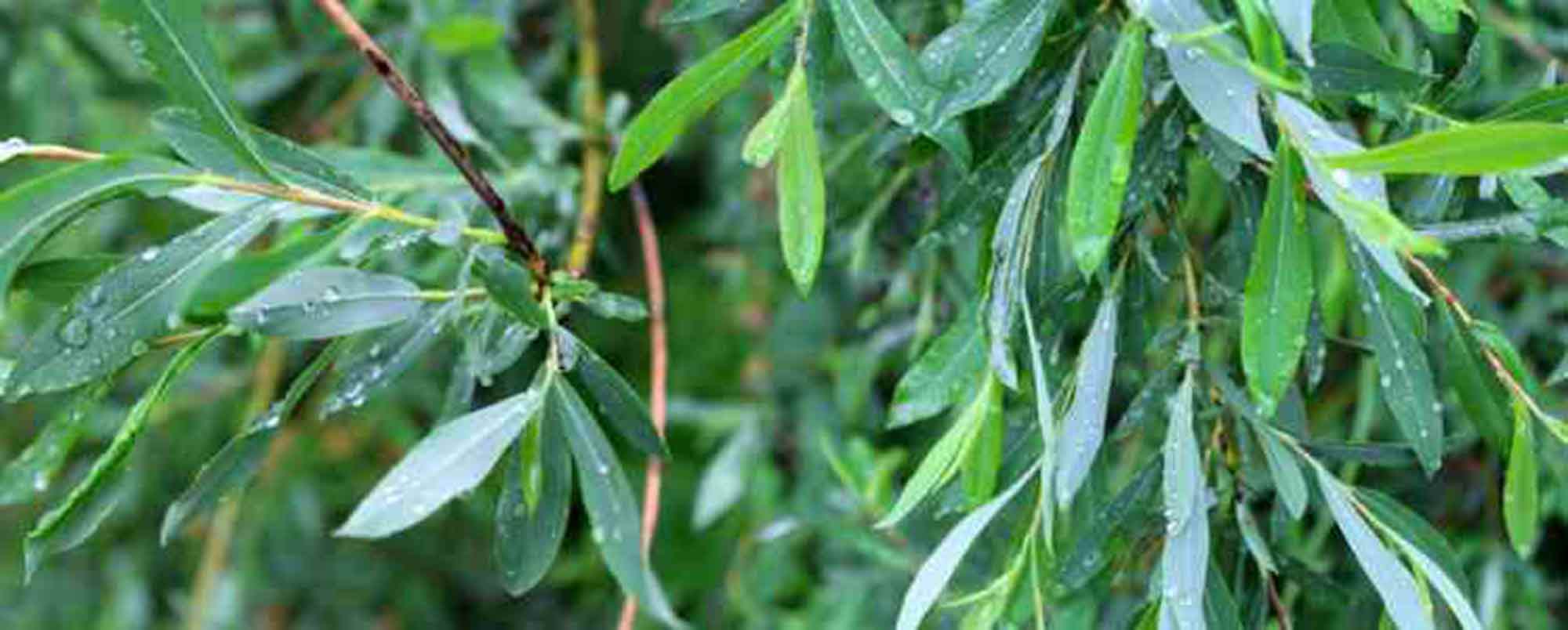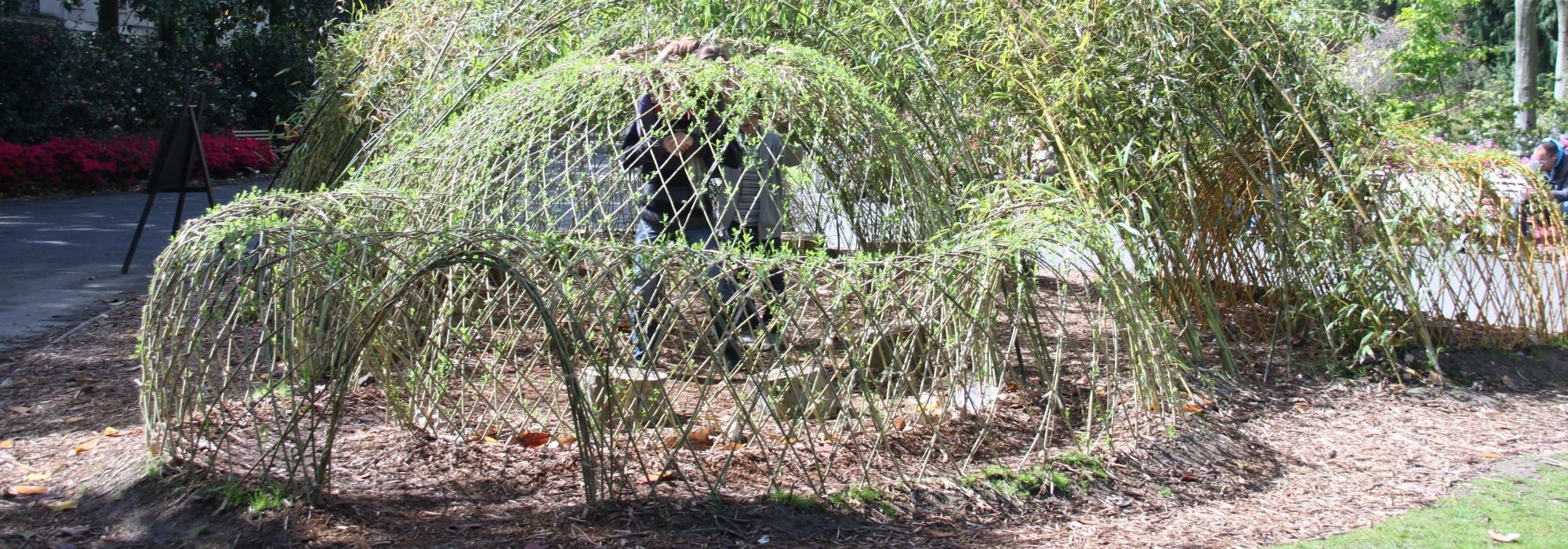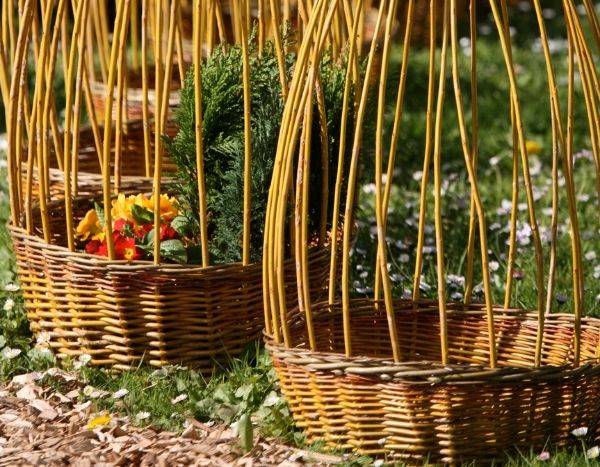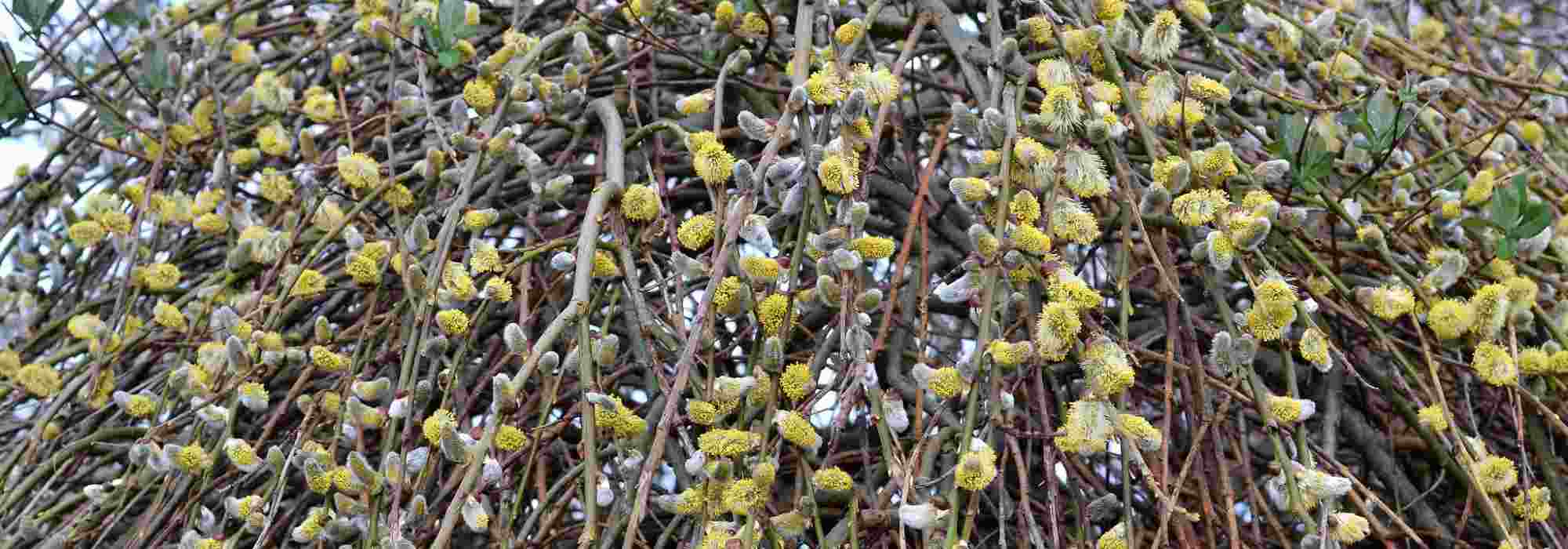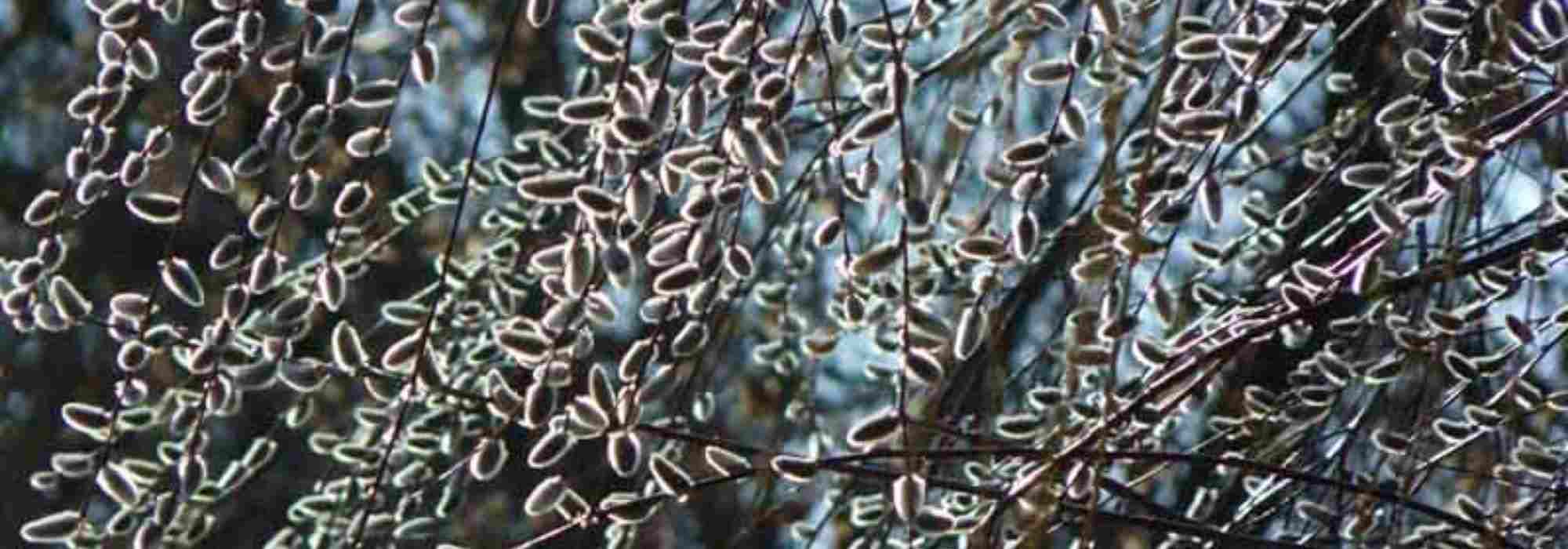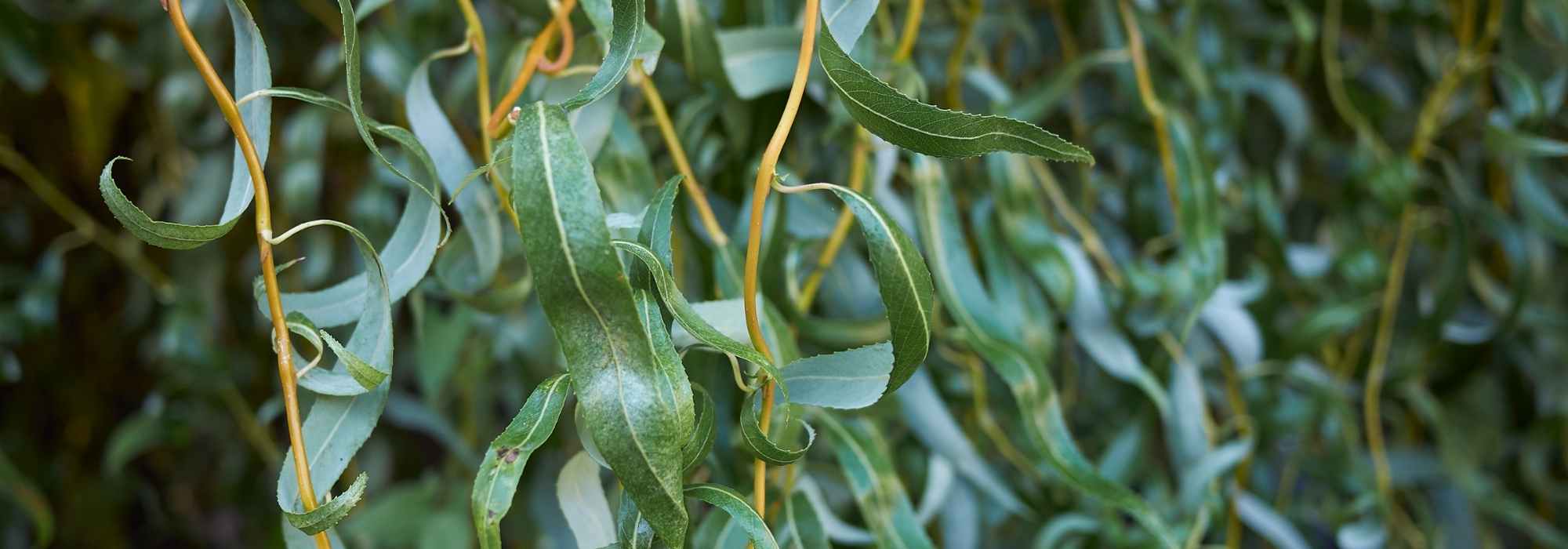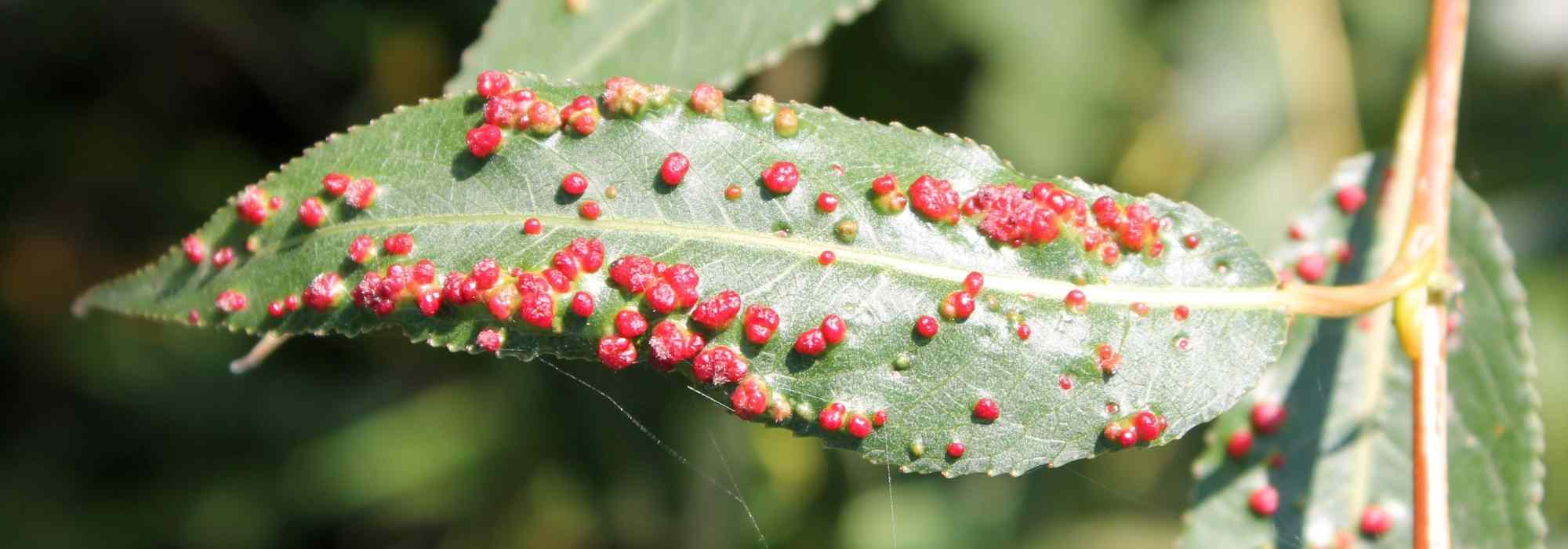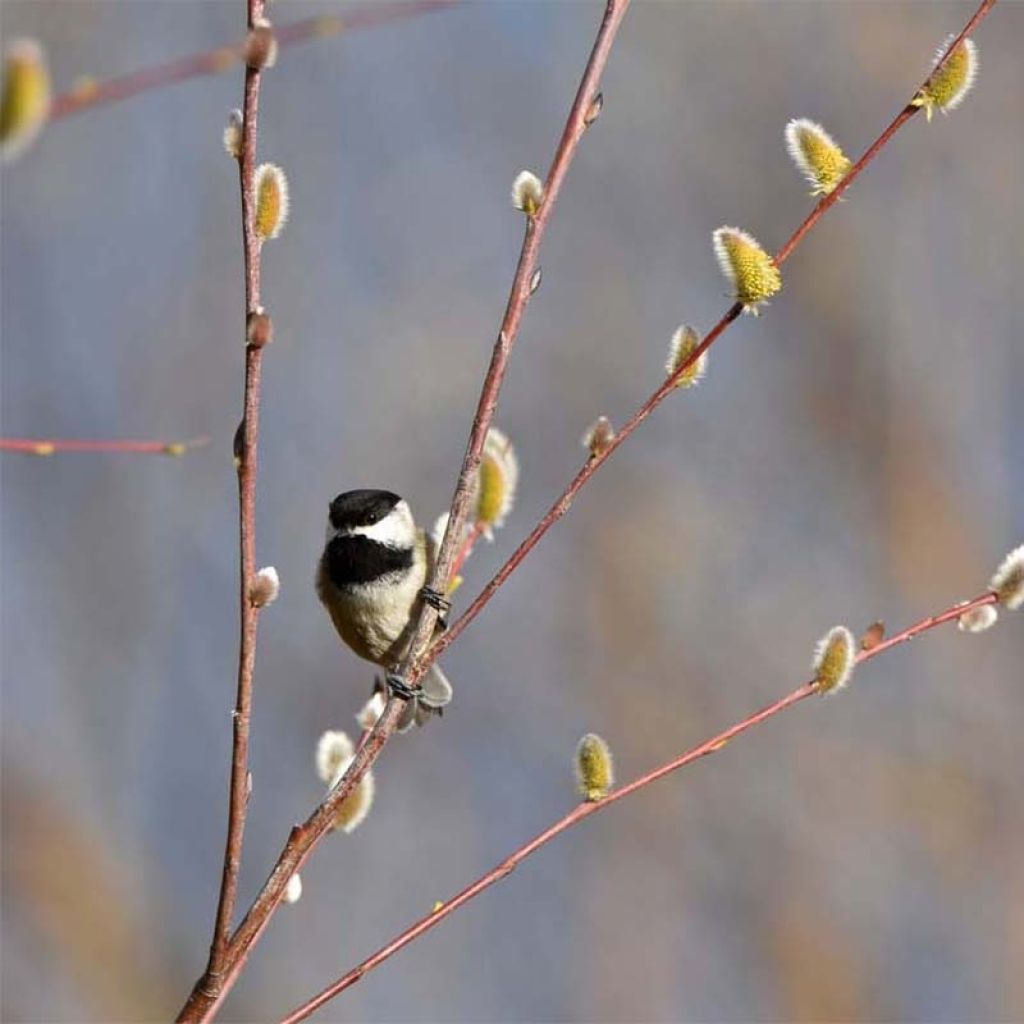

Salix acutifolia Blue Streak - Willow
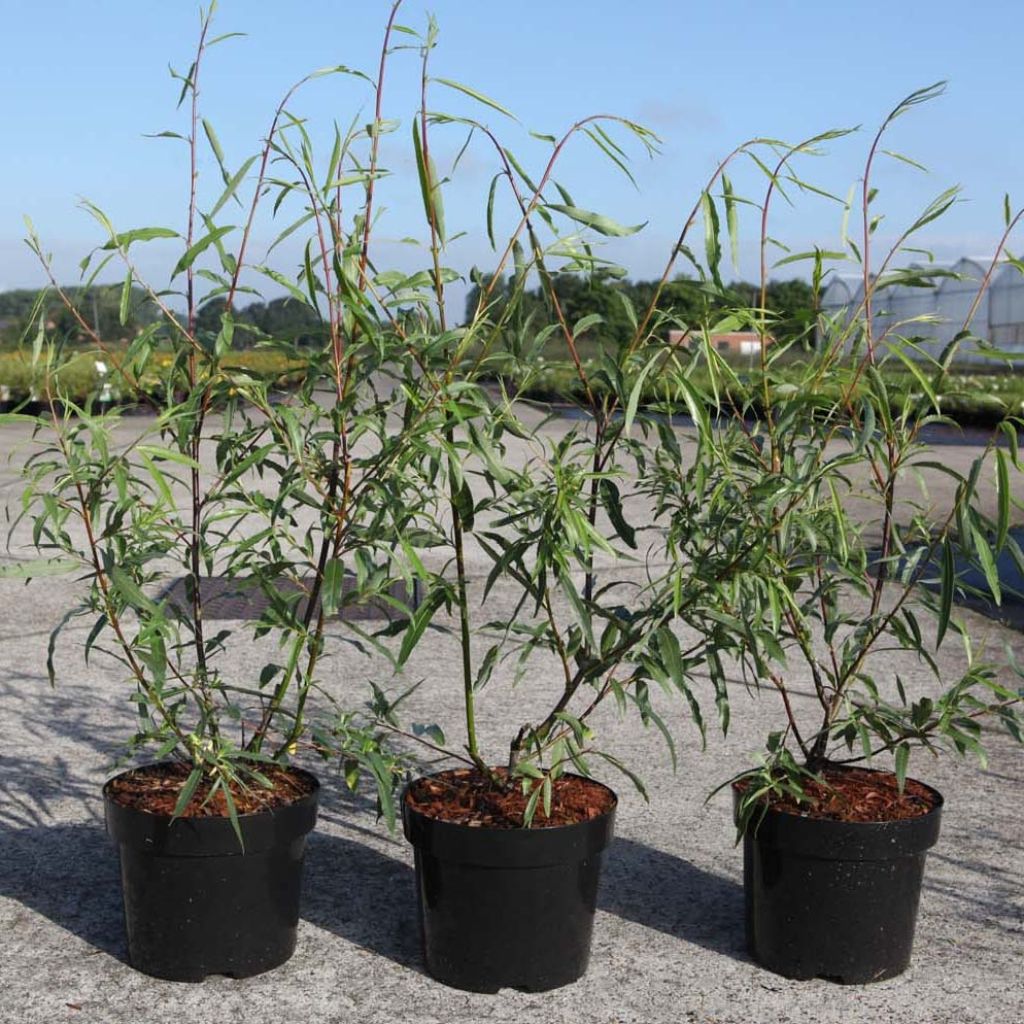

Salix acutifolia Blue Streak - Willow
Salix acutifolia Blue Streak - Willow
Salix acutifolia Blue Streak
Sharp-leaf Willow, Acute-leaved Willow
The young water mint and the Corsican thyme = ZERO!!! It looks like shredded material, these are not young plants but torn pieces from flowerbed clumps... As for the blue willows, they are fine.
Michel, 19/07/2024
Special offer!
Receive a €20 voucher for any order over €90 (excluding delivery costs, credit notes, and plastic-free options)!
1- Add your favorite plants to your cart.
2- Once you have reached €90, confirm your order (you can even choose the delivery date!).
3- As soon as your order is shipped, you will receive an email containing your voucher code, valid for 3 months (90 days).
Your voucher is unique and can only be used once, for any order with a minimum value of €20, excluding delivery costs.
Can be combined with other current offers, non-divisible and non-refundable.
Home or relay delivery (depending on size and destination)
Schedule delivery date,
and select date in basket
This plant carries a 24 months recovery warranty
More information
We guarantee the quality of our plants for a full growing cycle, and will replace at our expense any plant that fails to recover under normal climatic and planting conditions.

Does this plant fit my garden?
Set up your Plantfit profile →
Description
Salix acutifolia Blue Streak is a beautiful variety of Siberian violet willow, whose red wood bears large silvery catkins in spring and gradually acquires a decorative white-blue to purplish hue over time, particularly in winter. This large spreading shrub forms a beautiful swaying mass in spring and summer, woven with long, slender green leaves. Awarded in England for its ornamental qualities and ease of cultivation, this deciduous shrub with a handsome habit thrives in the sun, in any soil as long as it is moist.
Horticulturally originated and belonging to the Salicaceae family, the Blue Streak willow is a cultivar derived from Salix acutifolia, native to Russia and East Asia. It is a tall shrub that is very hardy and accustomed to harsh climates. It has a bushy and spreading habit, carried by long, almost horizontal flexible branches. Its growth is rapid, reaching a height of 4 m (13 ft 1 in) and almost as large in width when fully grown. The young branches are red in colour, then they take on a more purplish hue with age and are covered with white blooms that gives them a beautiful blue tint. Its deciduous foliage consists of long lanceolate leaves measuring 6 to 15 cm (2.4 to 5.9 in), dark green with a blue tint on the underside. It awakens quite early in spring, blooming from February/March, in the form of catkins measuring 4 to 6 cm (1.6 to 2.4 in) long. Silky and silvery in appearance, they turn yellow when the stamens emerge. Willows are dioecious: there are male and female plants, but this cultivar exclusively consists of male plants that will not bear fruit. Note that this willow tolerates pruning well, which allows it to be kept in modest dimensions.
Hardy, at least down to -15 °C (5 °F), Salix acutifolia Blue Streak is not very demanding: it will thrive in the sun in any soil as long as it remains moist while being well drained. In the garden, you can plant it as a hedge, as a standalone specimen, or within a bed alongside Siberian Pearls White Dogwood, Elijah Blue Blue Fescue, or the Kulsenmoor Switch Grass. It will also thrive near water features, reflecting its beautiful image in all seasons.
Salix acutifolia Blue Streak - Willow in pictures
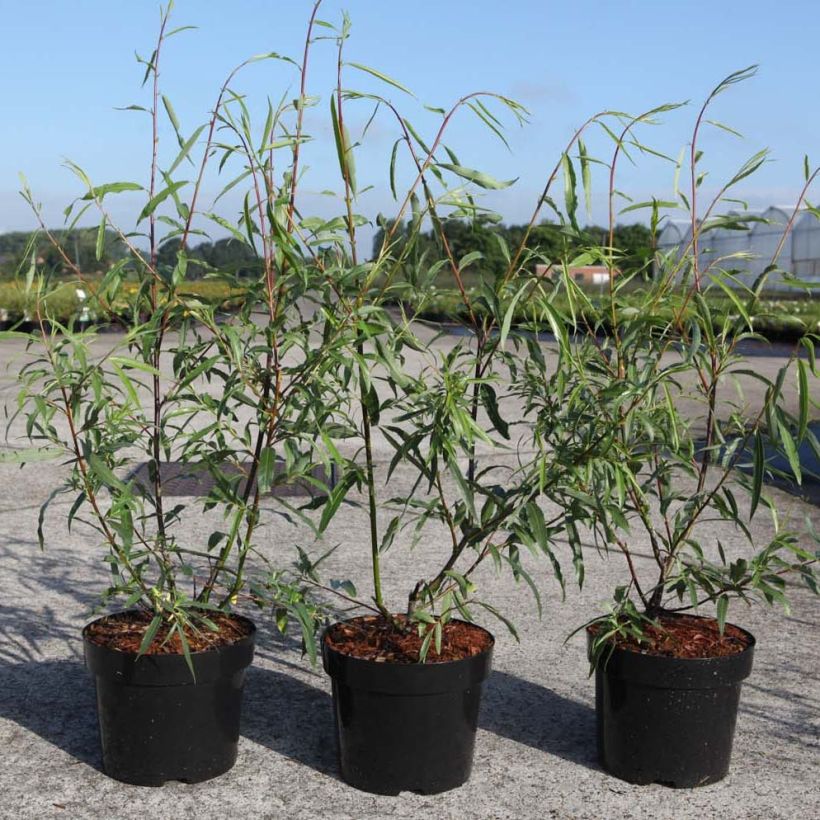

Plant habit
Flowering
Foliage
Bark
Botanical data
Salix
acutifolia
Blue Streak
Salicaceae
Sharp-leaf Willow, Acute-leaved Willow
Cultivar or hybrid
Other Willow - Salix
View all →Planting and care
Plant this Blue Steak willow in any deep, moderately fertile soil that remains moist but well-drained, and in a sunny location. It is susceptible to drought as well as consistently waterlogged soil. The most common disease of the willow is anthracnose, caused by a fungus (Marssonina salicicola) that stains its leaves brown. Control measures involve cutting and removing affected parts and/or collecting and destroying dead leaves in the autumn. For young plants, the best preventive measure is to spray a Bordeaux mixture, diluted at a rate of 25 g per litre of water, before the buds burst.
Planting period
Intended location
Care
Planting & care advice
-
, onOrder confirmed
Reply from on Promesse de fleurs
Haven't found what you were looking for?
Hardiness is the lowest winter temperature a plant can endure without suffering serious damage or even dying. However, hardiness is affected by location (a sheltered area, such as a patio), protection (winter cover) and soil type (hardiness is improved by well-drained soil).

Photo Sharing Terms & Conditions
In order to encourage gardeners to interact and share their experiences, Promesse de fleurs offers various media enabling content to be uploaded onto its Site - in particular via the ‘Photo sharing’ module.
The User agrees to refrain from:
- Posting any content that is illegal, prejudicial, insulting, racist, inciteful to hatred, revisionist, contrary to public decency, that infringes on privacy or on the privacy rights of third parties, in particular the publicity rights of persons and goods, intellectual property rights, or the right to privacy.
- Submitting content on behalf of a third party;
- Impersonate the identity of a third party and/or publish any personal information about a third party;
In general, the User undertakes to refrain from any unethical behaviour.
All Content (in particular text, comments, files, images, photos, videos, creative works, etc.), which may be subject to property or intellectual property rights, image or other private rights, shall remain the property of the User, subject to the limited rights granted by the terms of the licence granted by Promesse de fleurs as stated below. Users are at liberty to publish or not to publish such Content on the Site, notably via the ‘Photo Sharing’ facility, and accept that this Content shall be made public and freely accessible, notably on the Internet.
Users further acknowledge, undertake to have ,and guarantee that they hold all necessary rights and permissions to publish such material on the Site, in particular with regard to the legislation in force pertaining to any privacy, property, intellectual property, image, or contractual rights, or rights of any other nature. By publishing such Content on the Site, Users acknowledge accepting full liability as publishers of the Content within the meaning of the law, and grant Promesse de fleurs, free of charge, an inclusive, worldwide licence for the said Content for the entire duration of its publication, including all reproduction, representation, up/downloading, displaying, performing, transmission, and storage rights.
Users also grant permission for their name to be linked to the Content and accept that this link may not always be made available.
By engaging in posting material, Users consent to their Content becoming automatically accessible on the Internet, in particular on other sites and/or blogs and/or web pages of the Promesse de fleurs site, including in particular social pages and the Promesse de fleurs catalogue.
Users may secure the removal of entrusted content free of charge by issuing a simple request via our contact form.
The flowering period indicated on our website applies to countries and regions located in USDA zone 8 (France, the United Kingdom, Ireland, the Netherlands, etc.)
It will vary according to where you live:
- In zones 9 to 10 (Italy, Spain, Greece, etc.), flowering will occur about 2 to 4 weeks earlier.
- In zones 6 to 7 (Germany, Poland, Slovenia, and lower mountainous regions), flowering will be delayed by 2 to 3 weeks.
- In zone 5 (Central Europe, Scandinavia), blooming will be delayed by 3 to 5 weeks.
In temperate climates, pruning of spring-flowering shrubs (forsythia, spireas, etc.) should be done just after flowering.
Pruning of summer-flowering shrubs (Indian Lilac, Perovskia, etc.) can be done in winter or spring.
In cold regions as well as with frost-sensitive plants, avoid pruning too early when severe frosts may still occur.
The planting period indicated on our website applies to countries and regions located in USDA zone 8 (France, United Kingdom, Ireland, Netherlands).
It will vary according to where you live:
- In Mediterranean zones (Marseille, Madrid, Milan, etc.), autumn and winter are the best planting periods.
- In continental zones (Strasbourg, Munich, Vienna, etc.), delay planting by 2 to 3 weeks in spring and bring it forward by 2 to 4 weeks in autumn.
- In mountainous regions (the Alps, Pyrenees, Carpathians, etc.), it is best to plant in late spring (May-June) or late summer (August-September).
The harvesting period indicated on our website applies to countries and regions in USDA zone 8 (France, England, Ireland, the Netherlands).
In colder areas (Scandinavia, Poland, Austria...) fruit and vegetable harvests are likely to be delayed by 3-4 weeks.
In warmer areas (Italy, Spain, Greece, etc.), harvesting will probably take place earlier, depending on weather conditions.
The sowing periods indicated on our website apply to countries and regions within USDA Zone 8 (France, UK, Ireland, Netherlands).
In colder areas (Scandinavia, Poland, Austria...), delay any outdoor sowing by 3-4 weeks, or sow under glass.
In warmer climes (Italy, Spain, Greece, etc.), bring outdoor sowing forward by a few weeks.






























